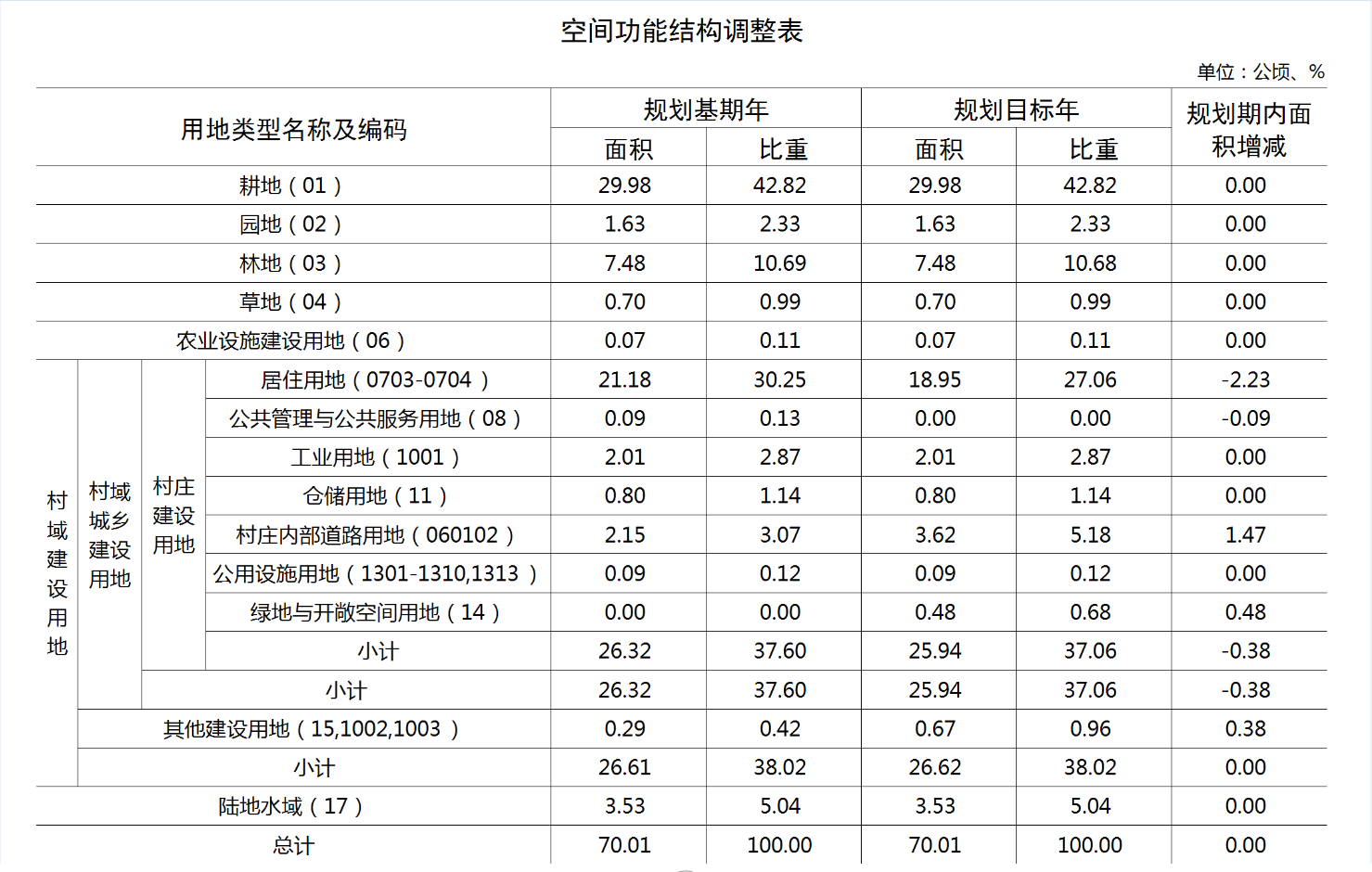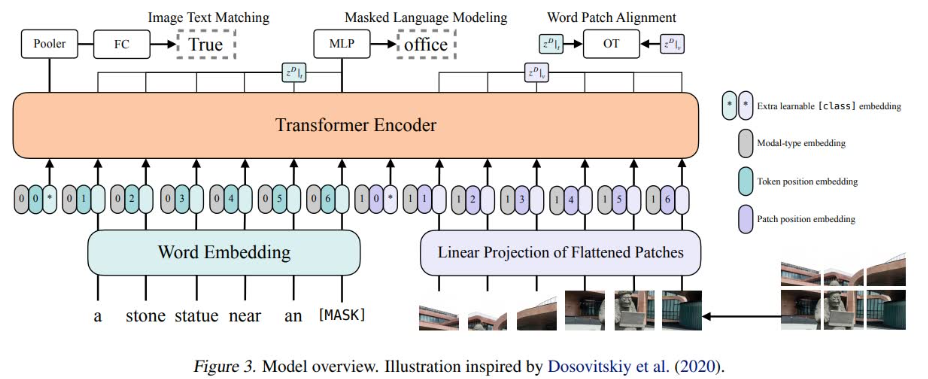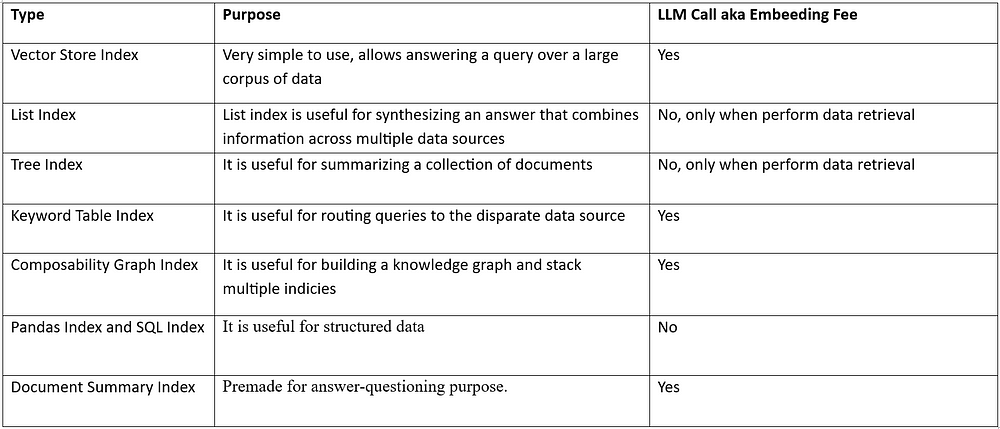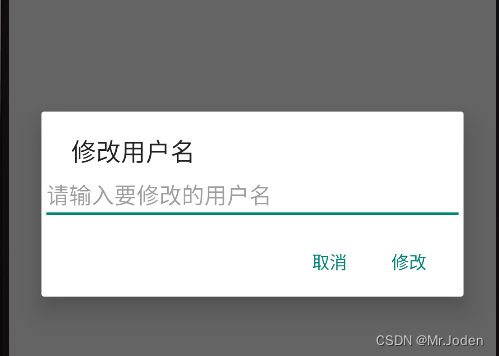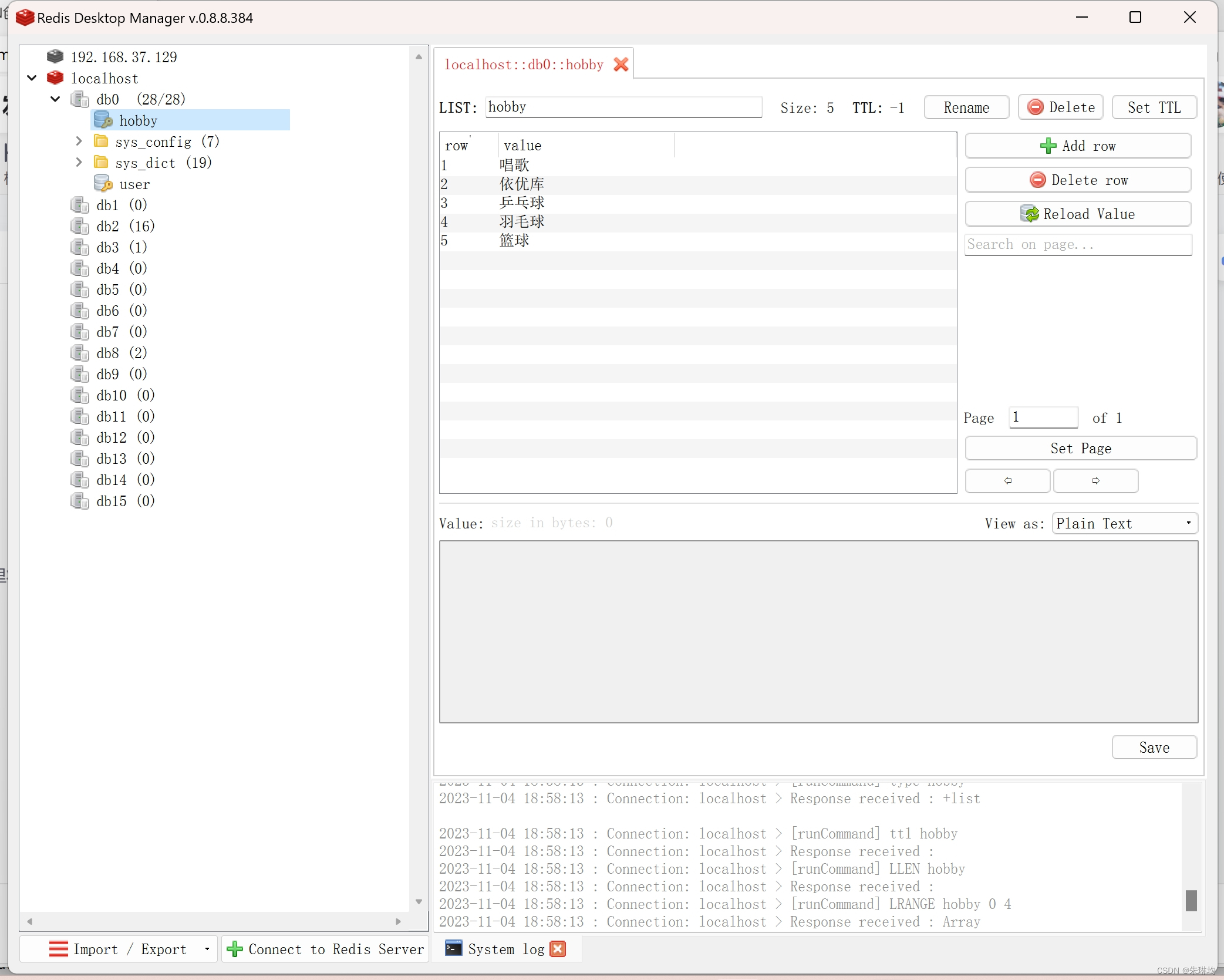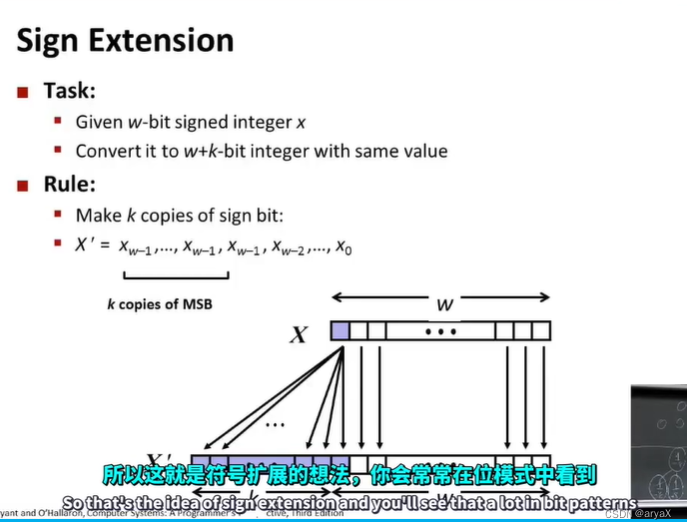概念
Stream把将要处理的集合中的元素进行流式化处理 ,在流式化处理过程中,借助Stream API对流中的元素进行操作,比如:筛选、排序、聚合等。
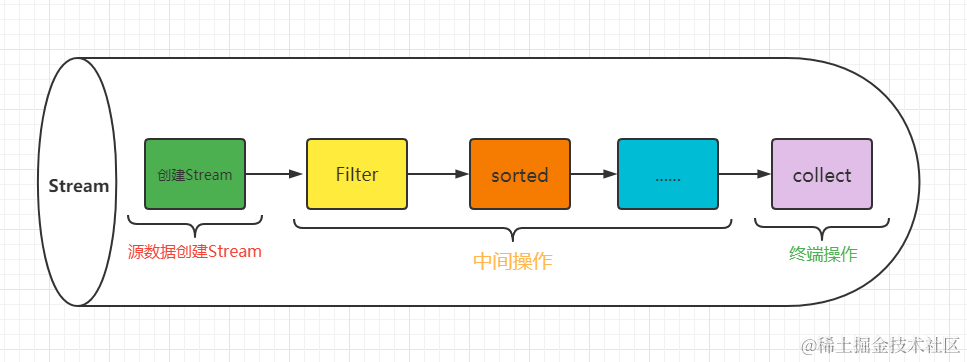
Stream的操作符大体上分为两种:中间操作符和终止操作符
中间操作符
对于数据流来说,中间操作符在执行制定处理程序后,数据流依然可以传递给下一级的操作符。
中间操作符包含8种(排除了parallel,sequential,这两个操作并不涉及到对数据流的加工操作):
- map(mapToInt,mapToLong,mapToDouble) 转换操作符,把比如A->B,这里默认提供了转int,long,double的操作符。
- flatmap(flatmapToInt,flatmapToLong,flatmapToDouble) 拍平操作比如把 int[]{2,3,4} 拍平 变成 2,3,4 也就是从原来的一个数据变成了3个数据,这里默认提供了拍平成int,long,double的操作符。
- limit 限流操作,比如数据流中有10个 我只要出前3个就可以使用。
- distint 去重操作,对重复元素去重,底层使用了equals方法。
- filter 过滤操作,把不想要的数据过滤。
- peek 挑出操作,如果想对数据进行某些操作,如:读取、编辑修改等。
- skip 跳过操作,跳过某些元素。
- sorted(unordered) 排序操作,对元素排序,前提是实现Comparable接口,当然也可以自定义比较器。
终止操作符
数据经过中间加工操作,就轮到终止操作符上场了;
终止操作符就是用来对数据进行收集或者消费的,数据到了终止操作这里就不会向下流动了,终止操作符只能使用一次。
- collect 收集操作,将所有数据收集起来,这个操作非常重要,官方的提供的Collectors 提供了非常多收集器,可以说Stream 的核心在于Collectors。
- count 统计操作,统计最终的数据个数。
- findFirst、findAny 查找操作,查找第一个、查找任何一个 返回的类型为Optional。
- noneMatch、allMatch、anyMatch 匹配操作,数据流中是否存在符合条件的元素 返回值为bool 值。
- min、max 最值操作,需要自定义比较器,返回数据流中最大最小的值。
- reduce 规约操作,将整个数据流的值规约为一个值,count、min、max底层就是使用reduce。
- forEach、forEachOrdered 遍历操作,这里就是对最终的数据进行消费了。
- toArray 数组操作,将数据流的元素转换成数组。
Stream的创建
1、通过 java.util.Collection.stream() 方法用集合创建流
List<String> list = Arrays.asList("a", "b", "c");
// 创建一个顺序流
Stream<String> stream = list.stream();
// 创建一个并行流
Stream<String> parallelStream = list.parallelStream();
2、使用java.util.Arrays.stream(T[] array)方法用数组创建流
int[] array={1,3,5,6,8};
IntStream stream = Arrays.stream(array);
3、使用Stream的静态方法:of()、iterate()、generate()
Stream<Integer> stream = Stream.of(1, 2, 3, 4, 5, 6);
Stream<Integer> stream2 = Stream.iterate(0, (x) -> x + 3).limit(4);
stream2.forEach(System.out::println); // 0 3 6 9
Stream<Double> stream3 = Stream.generate(Math::random).limit(3);
stream3.forEach(System.out::println);
输出结果:
3
6
9
0.8106623442686114
0.11554643727388458
0.1404645961428974
Process finished with exit code 0
stream和parallelStream的简单区分:
stream是顺序流,由主线程按顺序对流执行操作;
parallelStream是并行流,内部以多线程并行执行的方式对流进行操作,但前提是流中的数据处理没有顺序要求。
例如筛选集合中的奇数,两者的处理不同之处:
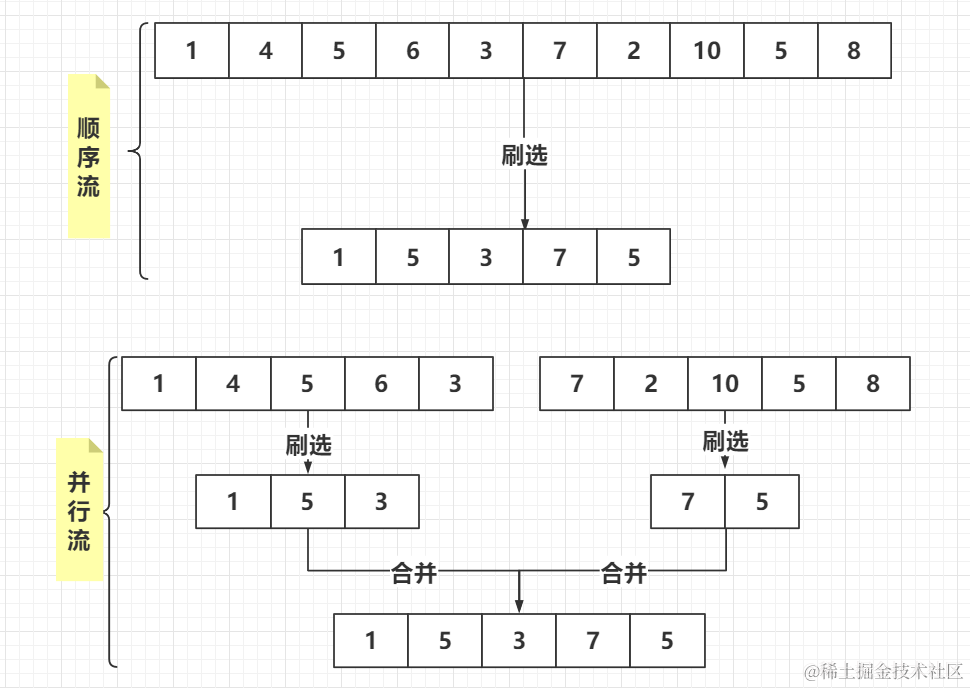
Stream使用
遍历/匹配(foreach/find/match)
Stream也是支持类似集合的遍历和匹配元素的,只是Stream中的元素是以Optional类型存在的。Stream的遍历、匹配非常简单。
public class StreamTest {
public static void main(String[] args) {
List<Integer> list = Arrays.asList(7, 6, 9, 3, 8, 2, 1);
// 遍历输出符合条件的元素
list.stream().filter(x -> x > 6).forEach(System.out::println);
// 匹配第一个
Optional<Integer> findFirst = list.stream().filter(x -> x > 6).findFirst();
// 匹配任意(适用于并行流)
Optional<Integer> findAny = list.parallelStream().filter(x -> x > 6).findAny();
// 是否包含符合特定条件的元素
boolean anyMatch = list.stream().anyMatch(x -> x < 6);
System.out.println("匹配第一个值:" + findFirst.get());
System.out.println("匹配任意一个值:" + findAny.get());
System.out.println("是否存在大于6的值:" + anyMatch);
}
}
输出结果:
7
9
8
匹配第一个值:7
匹配任意一个值:8
是否存在大于6的值:true
Process finished with exit code 0
筛选(filter)
筛选,是按照一定的规则校验流中的元素,将符合条件的元素提取到新的流中的操作。
筛选出Integer集合中大于7的元素,并打印出来
public class StreamTest {
public static void main(String[] args) {
List<Integer> list = Arrays.asList(6, 7, 3, 8, 1, 2, 9);
Stream<Integer> stream = list.stream();
stream.filter(x -> x > 7).forEach(System.out::println);
}
}
输出结果:
8
9
Process finished with exit code 0
聚合(max/min/count)
max、min、count这些字眼你一定不陌生,没错,在mysql中我们常用它们进行数据统计。Java stream中也引入了这些概念和用法,极大地方便了我们对集合、数组的数据统计工作。
案例一:获取String集合中最长的元素。
public class StreamTest {
public static void main(String[] args) {
List<String> list = Arrays.asList("adnm", "admmt", "pot", "xbangd", "weoujgsd");
Optional<String> max = list.stream().max(Comparator.comparing(String::length));
System.out.println("最长的字符串:" + max.get());
}
}
输出结果:
最长的字符串:weoujgsd
Process finished with exit code 0
案例二:获取Integer集合中的最大值。
public class StreamTest {
public static void main(String[] args) {
List<Integer> list = Arrays.asList(7, 6, 9, 4, 11, 6);
// 自然排序
Optional<Integer> max = list.stream().max(Integer::compareTo);
// 自定义排序
Optional<Integer> max2 = list.stream().max(new Comparator<Integer>() {
@Override
public int compare(Integer o1, Integer o2) {
return o1.compareTo(o2);
}
});
System.out.println("自然排序的最大值:" + max.get());
System.out.println("自定义排序的最大值:" + max2.get());
}
}
输出结果:
自然排序的最大值:11
自定义排序的最大值:11
Process finished with exit code 0
案例三:计算Integer集合中大于6的元素的个数。
public class StreamTest {
public static void main(String[] args) {
List<Integer> list = Arrays.asList(7, 6, 4, 8, 2, 11, 9);
long count = list.stream().filter(x -> x > 6).count();
System.out.println("list中大于6的元素个数:" + count);
}
}
输出结果:
list中大于6的元素个数:4
Process finished with exit code 0
映射(map/flatMap)
映射,可以将一个流的元素按照一定的映射规则映射到另一个流中。分为map和flatMap:
map:接收一个函数作为参数,该函数会被应用到每个元素上,并将其映射成一个新的元素。flatMap:接收一个函数作为参数,将流中的每个值都换成另一个流,然后把所有流连接成一个流。
案例一:英文字符串数组的元素全部改为大写。整数数组每个元素+3。
public class StreamTest {
public static void main(String[] args) {
String[] strArr = { "abcd", "bcdd", "defde", "fTr" };
List<String> strList = Arrays.stream(strArr).map(String::toUpperCase).collect(Collectors.toList());
System.out.println("每个元素大写:" + strList);
List<Integer> intList = Arrays.asList(1, 3, 5, 7, 9, 11);
List<Integer> intListNew = intList.stream().map(x -> x + 3).collect(Collectors.toList());
System.out.println("每个元素+3:" + intListNew);
}
}
输出结果:
每个元素大写:[ABCD, BCDD, DEFDE, FTR]
每个元素+3:[4, 6, 8, 10, 12, 14]
Process finished with exit code 0
案例二:将两个字符数组合并成一个新的字符数组。
public class StreamTest {
public static void main(String[] args) {
List<String> list = Arrays.asList("m,k,l,a", "1,3,5,7");
List<String> listNew = list.stream().flatMap(s -> {
// 将每个元素转换成一个stream
String[] split = s.split(",");
Stream<String> s2 = Arrays.stream(split);
return s2;
}).collect(Collectors.toList());
System.out.println("处理前的集合:" + list);
System.out.println("处理后的集合:" + listNew);
}
}
输出结果:
处理前的集合:[m,k,l,a, 1,3,5,7]
处理后的集合:[m, k, l, a, 1, 3, 5, 7]
Process finished with exit code 0
归约(reduce)
归约,也称缩减,顾名思义,是把一个流缩减成一个值,能实现对集合求和、求乘积和求最值操作。
案例一:求Integer集合的元素之和、乘积和最大值。
public class StreamTest {
public static void main(String[] args) {
List<Integer> list = Arrays.asList(1, 3, 2, 8, 11, 4);
// 求和方式1
Optional<Integer> sum = list.stream().reduce(Integer::sum);
// 求和方式2
Optional<Integer> sum2 = list.stream().reduce(Integer::sum);
// 求和方式3
Integer sum3 = list.stream().reduce(0, Integer::sum);
// 求乘积
Optional<Integer> product = list.stream().reduce((x, y) -> x * y);
// 求最大值方式1
Optional<Integer> max = list.stream().reduce((x, y) -> x > y ? x : y);
// 求最大值写法2
Integer max2 = list.stream().reduce(1, Integer::max);
System.out.println("list求和:" + sum.get() + "," + sum2.get() + "," + sum3);
System.out.println("list求积:" + product.get());
System.out.println("list求和:" + max.get() + "," + max2);
}
}
输出结果:
list求和:29,29,29
list求积:2112
list求和:11,11
Process finished with exit code 0
归集(toList/toSet/toMap)
因为流不存储数据,那么在流中的数据完成处理后,需要将流中的数据重新归集到新的集合里。toList、toSet和toMap比较常用,另外还有toCollection、toConcurrentMap等复杂一些的用法。
下面用一个案例演示toList、toSet和toMap:
public class Person {
private String name; // 姓名
private int salary; // 薪资
private int age; // 年龄
private String sex; //性别
private String area; // 地区
// 构造方法
public Person(String name, int salary, int age,String sex,String area) {
this.name = name;
this.salary = salary;
this.age = age;
this.sex = sex;
this.area = area;
}
public String getName() {
return name;
}
public void setName(String name) {
this.name = name;
}
public int getSalary() {
return salary;
}
public void setSalary(int salary) {
this.salary = salary;
}
public int getAge() {
return age;
}
public void setAge(int age) {
this.age = age;
}
public String getSex() {
return sex;
}
public void setSex(String sex) {
this.sex = sex;
}
public String getArea() {
return area;
}
public void setArea(String area) {
this.area = area;
}
@Override
public String toString() {
return "Person{" +
"name='" + name + '\'' +
", salary=" + salary +
", age=" + age +
", sex='" + sex + '\'' +
", area='" + area + '\'' +
'}';
}
}
public class StreamTest {
public static void main(String[] args) {
List<Integer> list = Arrays.asList(1, 6, 3, 4, 6, 7, 9, 6, 20);
List<Integer> listNew = list.stream().filter(x -> x % 2 == 0).collect(Collectors.toList());
Set<Integer> set = list.stream().filter(x -> x % 2 == 0).collect(Collectors.toSet());
List<Person> personList = new ArrayList<Person>();
personList.add(new Person("Tom", 8900, 23, "male", "New York"));
personList.add(new Person("Jack", 7000, 25, "male", "Washington"));
personList.add(new Person("Lily", 7800, 21, "female", "Washington"));
personList.add(new Person("Anni", 8200, 24, "female", "New York"));
Map<?, Person> map = personList.stream().filter(p -> p.getSalary() > 8000)
.collect(Collectors.toMap(Person::getName, p -> p));
System.out.println("toList:" + listNew);
System.out.println("toSet:" + set);
System.out.println("toMap:" + map);
}
}
输出结果:
toList:[6, 4, 6, 6, 20]
toSet:[4, 20, 6]
toMap:{Tom=Person{name='Tom', salary=8900, age=23, sex='male', area='New York'}, Anni=Person{name='Anni', salary=8200, age=24, sex='female', area='New York'}}
Process finished with exit code 0
统计(count/averaging)
Collectors提供了一系列用于数据统计的静态方法:
- 计数:
count - 平均值:
averagingInt、averagingLong、averagingDouble - 最值:
maxBy、minBy - 求和:
summingInt、summingLong、summingDouble - 统计以上所有:
summarizingInt、summarizingLong、summarizingDouble
案例:统计员工人数、平均工资、工资总额、最高工资。
public class StreamTest {
public static void main(String[] args) {
List<Person> personList = new ArrayList<Person>();
personList.add(new Person("Tom", 8900, 23, "male", "New York"));
personList.add(new Person("Jack", 7000, 25, "male", "Washington"));
personList.add(new Person("Lily", 7800, 21, "female", "Washington"));
// 求总数
long count = personList.size();
// 求平均工资
Double average = personList.stream().collect(Collectors.averagingDouble(Person::getSalary));
// 求最高工资
Optional<Integer> max = personList.stream().map(Person::getSalary).max(Integer::compare);
// 求工资之和
int sum = personList.stream().mapToInt(Person::getSalary).sum();
// 一次性统计所有信息
DoubleSummaryStatistics collect = personList.stream().collect(Collectors.summarizingDouble(Person::getSalary));
System.out.println("员工总数:" + count);
System.out.println("员工平均工资:" + average);
System.out.println("员工最高工资:" + max.get());
System.out.println("员工工资总和:" + sum);
System.out.println("员工工资所有统计:" + collect);
}
}
输出结果:
员工总数:3
员工平均工资:7900.0
员工最高工资:8900
员工工资总和:23700
员工工资所有统计:DoubleSummaryStatistics{count=3, sum=23700.000000, min=7000.000000, average=7900.000000, max=8900.000000}
Process finished with exit code 0
分组(partitioningBy/groupingBy)
- 分区:将
stream按条件分为两个Map,比如员工按薪资是否高于8000分为两部分。 - 分组:将集合分为多个Map,比如员工按性别分组。有单级分组和多级分组。
案例:将员工按薪资是否高于8000分为两部分;将员工按性别和地区分组
public class StreamTest {
public static void main(String[] args) {
List<Person> personList = new ArrayList<Person>();
personList.add(new Person("Tom", 8900, 23, "male", "Washington"));
personList.add(new Person("Jack", 7000, 25, "male", "Washington"));
personList.add(new Person("Lily", 7800, 21, "female", "New York"));
personList.add(new Person("Anni", 8200, 24, "female", "New York"));
// 将员工按薪资是否高于8000分组
Map<Boolean, List<Person>> part = personList.stream().collect(Collectors.partitioningBy(x -> x.getSalary() > 8000));
// 将员工按性别分组
Map<String, List<Person>> group = personList.stream().collect(Collectors.groupingBy(Person::getSex));
// 将员工先按性别分组,再按地区分组
Map<String, Map<String, List<Person>>> group2 = personList.stream().collect(Collectors.groupingBy(Person::getSex, Collectors.groupingBy(Person::getArea)));
System.out.println("员工按薪资是否大于8000分组情况:" + part);
System.out.println("员工按性别分组情况:" + group);
System.out.println("员工按性别、地区:" + group2);
}
}
输出结果:
员工按薪资是否大于8000分组情况:{false=[Person{name='Jack', salary=7000, age=25, sex='male', area='Washington'}, Person{name='Lily', salary=7800, age=21, sex='female', area='New York'}], true=[Person{name='Tom', salary=8900, age=23, sex='male', area='Washington'}, Person{name='Anni', salary=8200, age=24, sex='female', area='New York'}]}
员工按性别分组情况:{female=[Person{name='Lily', salary=7800, age=21, sex='female', area='New York'}, Person{name='Anni', salary=8200, age=24, sex='female', area='New York'}], male=[Person{name='Tom', salary=8900, age=23, sex='male', area='Washington'}, Person{name='Jack', salary=7000, age=25, sex='male', area='Washington'}]}
员工按性别、地区:{female={New York=[Person{name='Lily', salary=7800, age=21, sex='female', area='New York'}, Person{name='Anni', salary=8200, age=24, sex='female', area='New York'}]}, male={Washington=[Person{name='Tom', salary=8900, age=23, sex='male', area='Washington'}, Person{name='Jack', salary=7000, age=25, sex='male', area='Washington'}]}}
Process finished with exit code 0
接合(joining)
joining可以将stream中的元素用特定的连接符(没有的话,则直接连接)连接成一个字符串
public class StreamTest {
public static void main(String[] args) {
List<Person> personList = new ArrayList<Person>();
personList.add(new Person("Tom", 8900, 23, "male", "New York"));
personList.add(new Person("Jack", 7000, 25, "male", "Washington"));
personList.add(new Person("Lily", 7800, 21, "female", "Washington"));
String names = personList.stream().map(Person::getName).collect(Collectors.joining(","));
System.out.println("所有员工的姓名:" + names);
List<String> list = Arrays.asList("A", "B", "C");
String string = list.stream().collect(Collectors.joining("-"));
System.out.println("拼接后的字符串:" + string);
}
}
输出结果:
所有员工的姓名:Tom,Jack,Lily
拼接后的字符串:A-B-C
Process finished with exit code 0
排序(sorted)
sorted,中间操作。有两种排序:
sorted():自然排序,流中元素需实现Comparable接口sorted(Comparator com):Comparator排序器自定义排序
案例:将员工按工资由高到低(工资一样则按年龄由大到小)排序
public class StreamTest {
public static void main(String[] args) {
List<Person> personList = new ArrayList<Person>();
personList.add(new Person("Sherry", 9000, 24, "female", "New York"));
personList.add(new Person("Tom", 8900, 22, "male", "Washington"));
personList.add(new Person("Jack", 9000, 25, "male", "Washington"));
personList.add(new Person("Lily", 8800, 26, "male", "New York"));
personList.add(new Person("Alisa", 9000, 26, "female", "New York"));
// 按工资升序排序(自然排序)
List<String> newList = personList.stream().sorted(Comparator.comparing(Person::getSalary)).map(Person::getName)
.collect(Collectors.toList());
// 按工资倒序排序
List<String> newList2 = personList.stream().sorted(Comparator.comparing(Person::getSalary).reversed())
.map(Person::getName).collect(Collectors.toList());
// 先按工资再按年龄升序排序
List<String> newList3 = personList.stream()
.sorted(Comparator.comparing(Person::getSalary).thenComparing(Person::getAge)).map(Person::getName)
.collect(Collectors.toList());
// 先按工资再按年龄自定义排序(降序)
List<String> newList4 = personList.stream().sorted((p1, p2) -> {
if (p1.getSalary() == p2.getSalary()) {
return p2.getAge() - p1.getAge();
} else {
return p2.getSalary() - p1.getSalary();
}
}).map(Person::getName).collect(Collectors.toList());
System.out.println("按工资升序排序:" + newList);
System.out.println("按工资降序排序:" + newList2);
System.out.println("先按工资再按年龄升序排序:" + newList3);
System.out.println("先按工资再按年龄自定义降序排序:" + newList4);
}
}
输出结果:
按工资升序排序:[Lily, Tom, Sherry, Jack, Alisa]
按工资降序排序:[Sherry, Jack, Alisa, Tom, Lily]
先按工资再按年龄升序排序:[Lily, Tom, Sherry, Jack, Alisa]
先按工资再按年龄自定义降序排序:[Alisa, Jack, Sherry, Tom, Lily]
Process finished with exit code 0
提取/组合
流也可以进行合并、去重、限制、跳过等操作。
public class StreamTest {
public static void main(String[] args) {
String[] arr1 = { "a", "b", "c", "d" };
String[] arr2 = { "d", "e", "f", "g" };
Stream<String> stream1 = Stream.of(arr1);
Stream<String> stream2 = Stream.of(arr2);
// concat:合并两个流 distinct:去重
List<String> newList = Stream.concat(stream1, stream2).distinct().collect(Collectors.toList());
// limit:限制从流中获得前n个数据
List<Integer> collect = Stream.iterate(1, x -> x + 2).limit(10).collect(Collectors.toList());
// skip:跳过前n个数据
List<Integer> collect2 = Stream.iterate(1, x -> x + 2).skip(1).limit(5).collect(Collectors.toList());
System.out.println("流合并:" + newList);
System.out.println("limit:" + collect);
System.out.println("skip:" + collect2);
}
}
输出结果:
流合并:[a, b, c, d, e, f, g]
limit:[1, 3, 5, 7, 9, 11, 13, 15, 17, 19]
skip:[3, 5, 7, 9, 11]
Process finished with exit code 0
分页操作
stream api 的强大之处还不仅仅是对集合进行各种组合操作,还支持分页操作。
例如,将如下的数组从小到大进行排序,排序完成之后,从第1行开始,查询10条数据出来,操作如下:
//需要查询的数据
List<Integer> numbers = Arrays.asList(3, 2, 2, 3, 7, 3, 5, 10, 6, 20, 30, 40, 50, 60, 100);
List<Integer> dataList = numbers.stream().sorted(Integer::compareTo).skip(0).limit(10).collect(Collectors.toList());
System.out.println(dataList.toString());
输出结果:
[2, 2, 3, 3, 3, 5, 6, 7, 10, 20]
Process finished with exit code 0
并行操作
所谓并行,指的是多个任务在同一时间点发生,并由不同的cpu进行处理,不互相抢占资源;而并发,指的是多个任务在同一时间点内同时发生了,但由同一个cpu进行处理,互相抢占资源。
stream api 的并行操作和串行操作,只有一个方法区别,其他都一样,例如下面我们使用parallelStream来输出空字符串的数量:
List<String> strings = Arrays.asList("abc", "", "bc", "efg", "abcd", "", "jkl");
// 采用并行计算方法,获取空字符串的数量
long count = strings.parallelStream().filter(String::isEmpty).count();
System.out.println(count);
在实际使用的时候,并行操作不一定比串行操作快!对于简单操作,数量非常大,同时服务器是多核的话,建议使用Stream并行!反之,采用串行操作更可靠!
集合转Map操作
在实际的开发过程中,还有一个使用最频繁的操作就是,将集合元素中某个主键字段作为key,元素作为value,来实现集合转map的需求,这种需求在数据组装方面使用的非常多。
public static void main(String[] args) {
List<Person> personList = new ArrayList<>();
personList.add(new Person("Tom",7000,25,"male","安徽"));
personList.add(new Person("Jack",8000,30,"female","北京"));
personList.add(new Person("Lucy",9000,40,"male","上海"));
personList.add(new Person("Airs",10000,40,"female","深圳"));
Map<Integer, Person> collect = personList.stream().collect(Collectors.toMap(Person::getAge, v -> v, (k1, k2) -> k1));
System.out.println(collect);
}
输出结果:
{40=Person{name='Lucy', salary=9000, age=40, sex='male', area='上海'}, 25=Person{name='Tom', salary=7000, age=25, sex='male', area='安徽'}, 30=Person{name='Jack', salary=8000, age=30, sex='female', area='北京'}}
Process finished with exit code 0
打开Collectors.toMap方法源码,一起来看看。
public static <T, K, U>
Collector<T, ?, Map<K,U>> toMap(Function<? super T, ? extends K> keyMapper,
Function<? super T, ? extends U> valueMapper,
BinaryOperator<U> mergeFunction) {
return toMap(keyMapper, valueMapper, mergeFunction, HashMap::new);
}
从参数表可以看出:
- 第一个参数:表示 key
- 第二个参数:表示 value
- 第三个参数:表示某种规则
上文中的Collectors.toMap(Person::getAge, v -> v, (k1,k2) -> k1),表达的意思就是将age的内容作为key,v -> v是表示将元素person作为value,其中(k1,k2) -> k1表示如果存在相同的key,将第一个匹配的元素作为内容,第二个舍弃!









